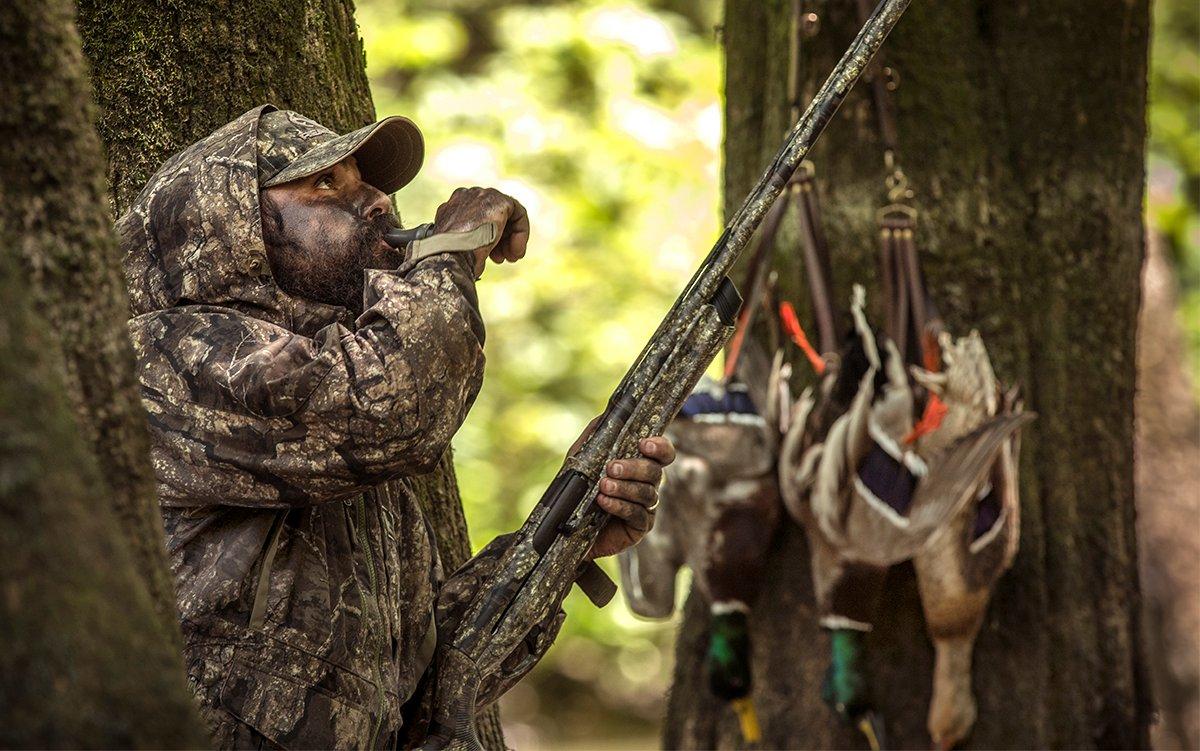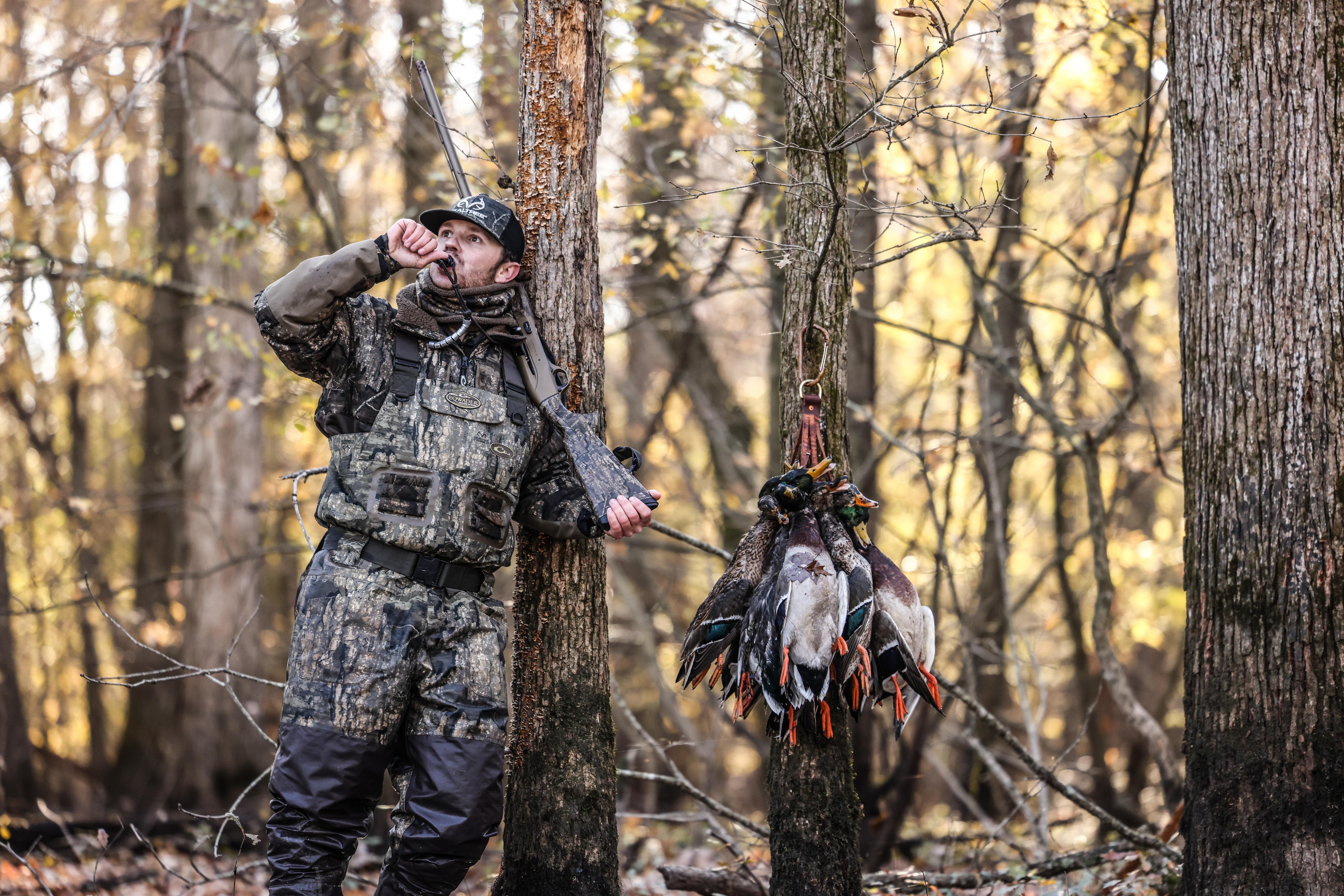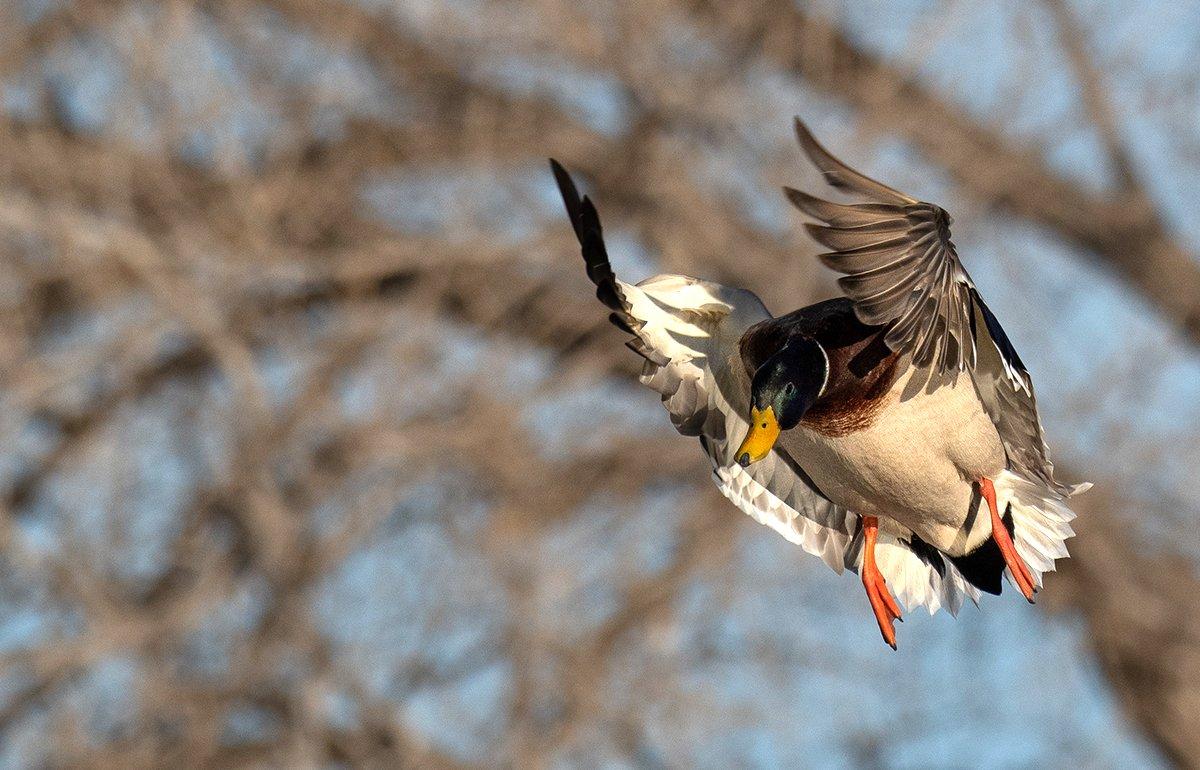Killing ducks in the woods is tougher than it's ever been, but our experts weigh in with this 201 course
Do-it-yourself green-timber hunts likely rank high on every duck hunter's bucket list. And that might be the problem: Everyone wants to hunt the woods nowadays, so timber has become tougher.
It was never easy. Navigating faint, stump-laden channels in the dark and trying to determine where ducks might parachute down beneath the canopy can be rough. Further, it's not enough to be a top-notch caller. You must also be better than the guys near you, and those hunters are likely some of the best duck callers on the planet. When you add the recent surge in timber hunting pressure, the degree of difficulty seems to increase exponentially, especially for newcomers.
Year after year, though, some guys find ducks and fill straps with greenheads in the heavily hunted timber of Arkansas and similar areas. You can too. To help, we asked several green-timber veterans to share their advanced strategies.
Finding Them
Everyone knows that scouting is critical in timber, but many high-profile hunters point out that how you scout can be just as important as where you look.
I always start to scout on onX or whatever app you prefer, said Justin Martin, general manager of Duck Commander. I try to limit my time disturbing all manner of wildlife, and using technology has really helped me fine-tune things. In the woods, if the water is too deep to wade, I will use a pirogue (or kayak, for all you non-Louisiana hunters). I never run a motor. That allows me to launch anywhere and be very quiet.
Dennis Dr. Duck Loosier, co-host of Black Cloud on Realtree 365, also prefers low-impact scouting.
Boats create noise, he said. I like to walk ridgelines where the water meets the land and try to find ducks that way, and I try not to walk in water, as it makes noise. Try to mark locations as close as possible without disturbing ducks. I'll mark it on onX or a GPS, but I also visually lock down on a bigger tree or an odd-shaped tree — anything that can help you identify the area without disturbing birds. You want them to feel as comfortable as they can the next day. Lots of young guys will boat in there, making all kinds of noise. But a duck will swim before it flies every time. They'll swim 100 to 200 yards before they flush, and then those guys mark the wrong holes.
When he's in the woods, Justin Martin looks and listens for ducks but also seeks other signs that birds are using an area.
"One feather equals 10 ducks." — Justin Martin
By sign I mean free-floating feathers, not shot-out feathers, he said. You have to learn to tell the difference. One feather equals 10 ducks. I'll also look for scat on floating logs and food sources. Food sources in woods can be acorns or other seed-bearing grasses or plants.
Timber hunters also must locate openings in the tree canopy that let ducks access the water from above. That can be tricky in public areas, which typically have few man-made holes.
Look for natural holes created by laydown trees that are positioned in between feeding areas, refuges and river systems, said Chris Cifreo, founder of Jargon Game Calls. Hot spots will be along old four-wheeler and logging trails that parallel oak flats. Remember, most waterfowl traffic will be along a river system they use to migrate, so searching as close as you can to the flow of water is where you will have the best chances of finding a mess of ducks.
Loosier said groups of hunters should use a divide-and-conquer scouting approach, which will let them investigate several spots and eliminate unproductive areas.
Keep moving until you find the right spot," he said. "Pick a different river or a different WMA. Be able to move and scout as much as you can. If you're coming down with a group of guys, it's better if each guy goes to a different location spread throughout the state. That will also increase your odds.
Avoiding Pressure
Most veteran timber hunters agree that hunting pressure has increased, which means it's not enough to simply find ducks. You must also identify relatively secluded areas where you can work birds. James Buice, a longtime timber hunter and Realtree.com waterfowl contributor, relies on hard work and common sense.
It's difficult to find a spot away from other hunters, but setting up a respectful distance from other hunters and not on their upwind side will usually keep you out of trouble, Buice said. Pass shooting another party's swing ducks is a sure way to get yelled at. If I'm hunting public timber, I try to get to the A spot first by waking up early. I always have three to four secondary locations if someone is at the choice spot. If you're willing to park the boat and walk dry ground into an isolated flooded area, that will leave a good number of hunters behind.
Buice also seeks specific types of holes other hunters might overlook.
Smaller, out-of-the-way duck holes are the best spots to have seclusion and often better hunting because you're not competing with other hunters calling to the birds, and the ducks will shy away from larger openings due to pressure, he said.
Justin Martin relies on his journal to reveal areas and conditions, including river stages, that typically produce success.
I don't go just to go," he said. "I have kept a log of water levels and such throughout the years, and I know when I can go where and what to expect. Drought years like we are in now are tough because the crowd is that much closer together, but you can still kill plenty of 'em. You just might have some long walks across dry ground.
Brandon Martin, creative director for Branded, said increased pressure requires hunters to take full advantage of good spots when they find them. Competition will inevitably follow, so you might not get a second chance.
When a particular group of hunters finds a group of ducks rafted up, unless they shoot them with bow and arrows, there will be a pile of hunters there within a few days," he said. "The majority of guys hunting public ground will hear a ton of shots in a particular area and will end up in that area the next day, unfortunately — not because they scouted, but because they heard multiple volleys.
Getting Them Close
Calling is the essence of timber hunting, as flying ducks cannot see birds on the water below the trees, so they rely on sound to locate other ducks and safe areas. And although many folks call well — especially in Arkansas — success can boil down to knowing when to call as much as how to call.
The No. 1 mistake by rookies is calling too much and really not reading the ducks, Cifreo said. They will always let you know what they want, if anything at all, but you have to be observant and willing to change in order to be successful.
Brandon Martin constantly shifts his approach as ducks react to his calling.
I like to call as hard as possible until I fully have their attention, he said. If they start acting disinterested, I will stay on them. As they are working over the hole, I use soft quacks and chuckles. When they hit the corners, hit them with lazy hen highballs. Quack them to the water.
Justin Martin described his calling approach as "minimal," and said he tries to sound like real ducks, not hunters, to boost realism and make ducks more relaxed.
Most of the time, I'm hunting destination birds and not really running traffic, so to speak, so the ducks don't prefer as much calling," he said. "If I were running traffic, I would blow my guts out, but that's just not how we hunt here. We let ducks build in spots and manage pressure, and then go kill 'em and get out.
Also, calling in timber differs from calling in open areas, such as rivers or impoundments. Loosier said the visual barrier of trees and competition from other hunters forces hunters to use a specialized approach.
Ducks make those turns, but you have neighbors who are probably just as good at calling as you, so you don't want them to drift too far, he said. You want to keep those corners kind of tight. In fields or open water, you can let them make large swings, but not in timber.
Some timber hunters eschew decoys, but many believe a realistic spread at least gives ducks a sense of comfort before they finish and helps line them up for clear shots.
Clean, bright decoys will help you stand out amongst other hunters, Cifreo said. Decoy spreads will need to be changed up from day to day, but a good rule of thumb is to use less for the late season or pressured, stale ducks, and more decoys for the early season or new, migrating birds.
Loosier bases his spread based on the size and configuration of the hole he's hunting. And like many folks, he constantly tweaks his layout when birds don't finish.
Throw decoys up near the trees, too, so when they circle, it looks like the real thing, he said. It looks like some of them hit the hole and swam into the trees. I'm a firm believer that if everybody's hidden well and ducks see your decoys then take a dip in the trees but then leave, they've seen something that makes them unconfident about coming in. Maybe the arrangement of decoys is not quite right, or maybe one or two are in the way of where they want to be.
Because thick woods often minimize the effects of wind in timber, motion can be especially important. Many hunters still use spinners in timber, but others prefer a traditional approach.
Jerk strings are great tools we use, Loosier said. I recommend more than one. I use three or four, depending on the guys you have hunting. If you have lots of guys standing by a tree, put a jerk string in their hands. The more it's moving down there, the more it looks like real birds.
Even shooing ducks in timber can be tougher. Birds that float down through the canopy and start to finish might seem easy, but Realtree pro Chad Belding, host of The Fowl Life, said that's deceiving.
Once they get down into those woods and under those treetops, they'll start to bounce, Belding said. Some will go to the left, some to the right, and some at your feet. When they're below the trees, they lose the effect of the trees and just pick out where to land. Calling the shot is different in the flooded timber. It becomes a talent and an instinct you have to be able to master and not make any mistakes. You're only going to be given a few opportunities on each timber hunt, so you want to make the most of them.
Cifreo agreed, saying hunters should exercise patience before shooting.
I think a lot of shots get called too early because of the excitement level of seeing those ducks get below the trees, Cifreo said. Just because they break those trees doesn't mean they're killable. If you let them be wild and let them hunt you, you'll get much better shots.
Conclusion
Experts concur that hunting timber has probably become more difficult in the 21st century, especially on public ground, but they also say flooded woods in prime wintering areas still offer great opportunities. The key, as with any type of duck hunting, is to adapt, improve and stay ahead of the competition. That way, your next boat ride out of a WMA should include a dandy pile of green in the bow.
Click here for more Realtree waterfowl hunting content. And check us out on Facebook.










